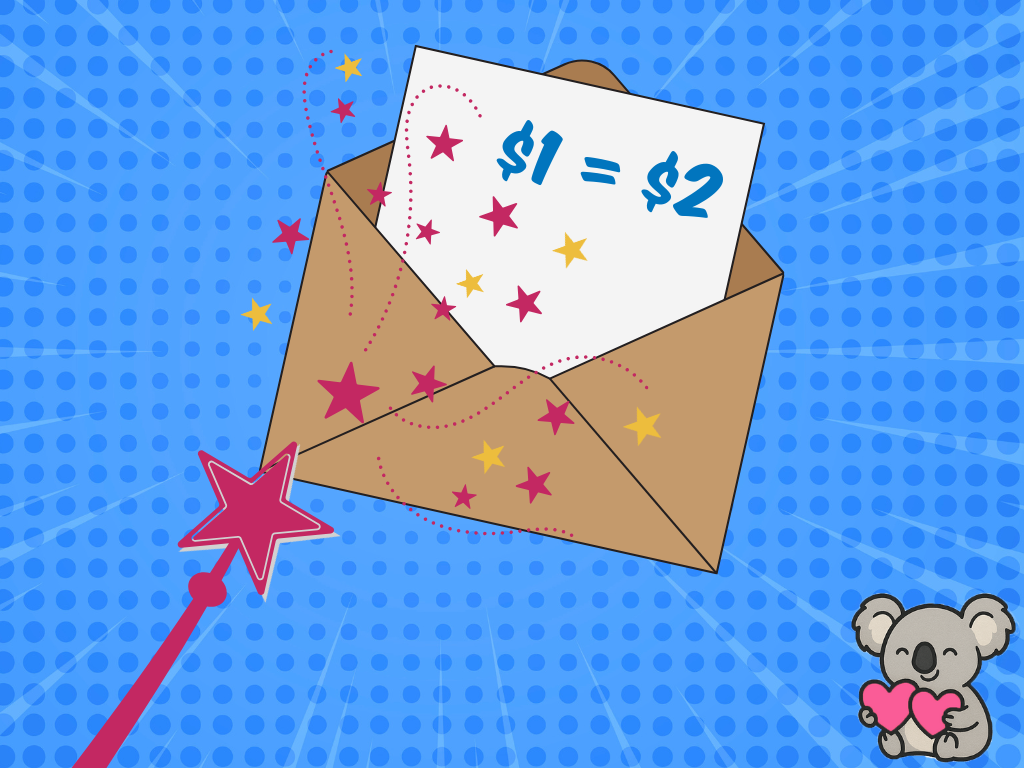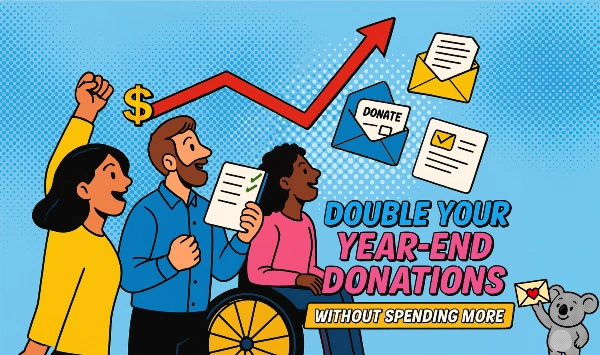Buy one, get one free!
Half off this Friday only!
Retailers know the power of a bargain. And they know how to express a bargain for the best impact on sales.
A bargain helps overcome inertia – that sense we often have that we’ll get around to buying that thing eventually. A discount gives us a reason to do it now.
It works for sales.
And it can work for fundraisers too.
There’s a way to make a donation a “bargain.”
It’s a matched giving offer.
A matched giving offer is where someone else will “match” a donor’s gift, increasing the impact of what they give. It is fundraising gold. Here’s what it typically does your fundraising:
- A match drives a big jump in response rate, sometimes as much as 50%.
- Often (though not always) it brings a higher average gift.
Bottom line: when you deploy a match, you raise more money. While I’ve seen the increase range from “pretty good” to “jaw-droppingly amazing,” I’ve never seen a match not work.
A successful match fundraising offer has four elements:
1. The granter
A match starts when , or a group of funders (more on this later), agrees to “match” the giving of other donors. Typically, it goes like this: “If you raise $10,000 from your donors, I’ll match that amount with another $10,000.”
Sometimes (rarely, really) the granter has a condition: they will not give their $10,000 unless the organization raises the other $10,000. More commonly, the granter “challenges” the other donors, and will give their donation either way. This is a “symbolic” challenge, rather than a “raise it or lose it” challenge. But it works just as well.
Granters sometimes come from foundations or other institutional funders, but you can raise matches from your donors, especially major and mid-value donors. They love being catalysts for other donors. You can go to one large donor, or pool donations from several donors. Board members often love to create matching funds. It gives them a positive and meaningful way to work together and with other donors to support the cause.
The ask to these donors might go like this:
We are asking good friends like you to help launch a new campaign. Your gift, along with the gifts of other generous supporters, will form a matching grant fund. Once this fund is in place, we will challenge other donors to follow your generous lead by offering to match their contributions dollar-for-dollar —out of the fund you help to create.
2. The Match Fund
Now you have a “matching fund,” ready to use in fundraising. The amount of your fund is important: it is the “scarcity factor” that helps make a match offer urgent and compelling. It implicitly challenges donors to give now — before the fund is “used up.” You should say this explicitly: “Give now, while matching funds are still available!”
Publishing the amount of the fund also covers you in case you donors give more than the match total, meaning those who give late won’t have their gift matched.
How much should the fund be? Can it be “too much” or “too little”? Short answer: no. Any amount will do, but there’s an ethical challenge you should consider: If your campaign is expected to raise $100,000 and the matching fund is $5,000, the large majority of donors who were motivated by the match won’t be matched! It’s best to have a fund that’s at least in the ballpark of what you’re likely to raise in your match campaign.
3. The multiplier
Typically, matches are one-for-one: For every dollar given, the granter gives a dollar. There are several ways of expressing that to donors:
- Every dollar you give will be matched by $1.
- Every dollar becomes $2.
- Double the impact of your giving.
But the multiplier doesn’t have to be one-to-one. The granter could give $2 for every dollar. Or three, four, on up. I’ve done matches of 20 to one and higher, and I have some evidence that higher multipliers do marginally better than the standard one-for-one.
4. A deadline
There’s another scarcity factor beyond the amount of the fund: a deadline. “Gifts matched until 1 July.” It may seem redundant to have two reasons to hurry up and give – and I’ve seen match appeals do well without a deadline – but the more you can do to help overcome the donor’s inertia, the better off you’ll be.
When you marshal these four elements, you have a match offer. You are on your way to a boost in revenue.
While a match does so much for your fundraising, it might seem like that’s all you need to do to raise funds: get a match and ask people to give.
That’s not enough. You’re still raising funds from human donors, and that means you have to ask people to help solve a specific problem, as we must in all fundraising. The match just makes their solution more compelling.
As always, make sure you articulate what their gift will do – along with the fact that it will multiply. That is, you still need a fundraising offer – a donor-sized solution to a problem. The difference, their gift does more:
- Feed twice as many hungry children!
- Double your gift to feed the children!
- Every dollar you give will become $2 worth of lifesaving help!
How to maximize the power of the match
1. Trumpet the match everywhere
The match should be unavoidable in your message. Constantly mentioned. So repetitive it might make your writing professor’s head spin.
Because people skim your message. If you just create a normal message with one sentence about the match at the end, many readers will miss the fact that you’re offering a match. The match should be mentioned five or more times. Also:
- The outer envelope or subject line should be about the match. (This is one of the few times it’s a good strategy to “give away” the offer up front.)
- In direct mail, at least one lift should be all about the match.
- The match should be integral on the reply device: “$XX will become $XX*2”
- Every headline and nearly every subhead should mention the match.
- Even put it on the return envelope: “Rush for Matching Funds!”
- The donation page must include the match!
2. Do the math for the donor
An amount of money doubling is about the easiest math possible. A donation of $50 becomes $100. In a match appeal, every time you mention an amount you want them to give, also tell them what it will be when matched.
3. Don’t be confusing
A match is a simple thing. It’s two donors agreeing to partner up in their support of your organization. Don’t make it more complex than that: “Your donation will be matched.”
The good news is that you have a lot of flexibility in the way you describe it: Matching Funds. Matching Grant. Challenge Fund. Matching Challenge. All those things work, because they stick to the idea that the donor’s gift will be matched.
Some fundraisers prefer to focus on multiplying the donor’s impact rather than their money. That works too – as long as you include that dollar-multiplying impact of the match: “Your donation of $50 will have $100 worth of impact, thanks to this Challenge Fund.”
One common source of confusion (that I’ve committed a couple of times): Don’t say anything that might be interpreted as “Please give twice as much.” It’s an easy mistake to make, and I know this from experience: “Double your donation!” Instead, say “Double the impact of your donation.”
Can you overdo match appeals?
That’s a good question. If you use a match offer more than a few times, will it “wear out” and become less effective?
Short answer: No. You can deploy match offers frequently. It keeps on being effective. I’ve had clients who did match appeals in the mail nearly all the time – 12 or more times a year. It doesn’t wear out.
With repeated use, it becomes less exceptional. Instead of a 50% boost over non-match appeals, it becomes a 10% or 20% boost. But I’ve never seen it “go bad.” It just keeps on motivating donors to give.
Your critical year-end fundraising is just around the corner. How’d you like to DOUBLE your income from that campaign? Find out how at our all-new webinar, Double Your Year-End Donations Without Spending More. Sean Triner will lay out the complete plan that can dramatically boost your income this year!
Please share your experience by leaving your reply below. We’d love to learn from your experience.











